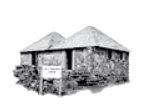Current Research
A Systematic Survey and Mapping Project
In the 1960s and 70s, field surveys were conducted to locate and map all cultural heritage sites of Antigua, Barbuda and Redonda. These early surveys catalogued hundreds of sites, including Archaic, Ceramic and Historical Period sites. Additional studies and field work have located many more. However, the island has undergone massive development and it is expected that many sites will have been lost. Recent interests in heritage tourism and the protection of important cultural heritage sites, a new survey has been launched, using modern methods (GIS, GPS and digital photography).
All heritage sites will be mapped, valuated, ranked and recommendations made for the end-use of these sites. It is anticipated that this will reduce the accidental loss of archaeological sites by development and act as a baseline for heritage tourism development and research. Prominent natural heritage sites and known underwater sites will also be included. As this is a volunteer based project that has no funding, it is anticipated to take several years to complete.
Betty's Hope Revisited
Archaeological research at Betty’s Hope has now been halted for a "catch-up" moment. Collections of excavated materials are being analysed and published. In addition to the university dissertations and theses, field reports and journal publications produced over the past 11 years are being collated for local access. The largest contribution to research on the site was done by Dr. Georgia Fox of Chico Campus, California State University participating in the Antigua Field School. Research on the site included surveys to find and map additional structures and archaeological deposits and excavations concentrated in the area of rum distillation, Great House and its service courtyard, the south western section of the slave village. It is now clear that Betty’s Hope was a large and complex industrial and residential site and archaeology to date has only scratched the surface of this large estate. In addition, the microfilms of sections of the Codrington Papers at the Museum of Antigua were digitized and now provide a “more user-friendly” format for researchers. During the time of research, stabilization activities were done on the windmill which has become a major tourism site. Thanks to a US Ambassadors Grant for preservation of historical sites, the cap house of the windmill was rebuilt and the upper portion of the stone mill-wall was repointed.
Indian Creek
In the early 1970s, the Indian Creek Arawak site was excavated by Yale University and the Antigua Archaeological Society. It proved to be an exceptional site with archaeological deposits representing the entire Ceramic Age on Antigua Barbuda. A series of middens surrounding the central area of the site were excavated and the ceramic chronology for the region was established by Professor Irving Rouse. Rouse chronology for Antigua gave the name Indian Creek to the earliest ceramics representative of the Saladoid culture. Some of the excavated ceramics were taken to Yale University and are housed in the collections of the Peabody Museum with collections from the Circum-Caribbean Region, creating an important asset for understanding the regional perspective on the migration and adaptation of the first people. As these early excavations were focused primarily on ceramic chronologies, the site is now being revisited by Dr. Murphy and a multidisciplinary team. The focus will be to re-evaluate the ceramic chronology, to investigate cultural and environmental changes, subsistence strategies, and lithic analysis. Today Indian Creek is a dry xerophytic environment that is not capable of supporting settlement which raises the question, how could such a substantial settlement have developed and remained there for over 1500 years. This revised project has just begun and is in need of funding and field archaeologists.
current research | field research centre

